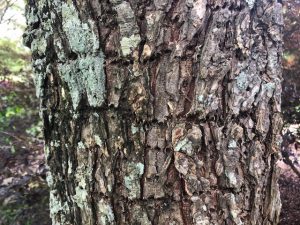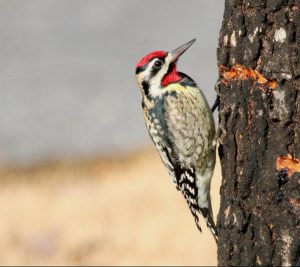
As a kid, I always thought “yellow-bellied sapsucker” was an insult purely invented by Yosemite Sam to hurl at his nemesis, Bugs Bunny. As it turns out, the yellow-bellied sapsucker is a real animal, with a unique feeding habit that doesn’t include carrots.
A little while back, a friend posted a photo on Facebook of multiple, horizontal rows of small (1/4”) holes on her sassafras tree. She appealed for help with identifying the culprit and wondered if it would result in permanent damage. What she had observed was the signature feeding strategy of the yellow-bellied sapsucker, a woodpecker that migrates throughout North America. When the bird drills these holes, known as sap wells, the sap begins to ooze out and also traps insects unlucky enough to get caught in the sticky substance.

The birds routinely visit these wells, lapping up the carbohydrate-rich sap and eating the insects with their spear-like tongues. The birds will return to their trees each year, forming new and nearly perfect rows up and down the trunk from their original concentric rings. Rarely, repeated feeding/drilling can damage trees permanently, but the vast majority of trees handle the damage without serious consequences.
Yellow-bellied sapsuckers have yellowish feather streaks on their bellies, but they are predominantly black and white, with striking red patterns on the head. Like other woodpeckers, the sapsucker has interesting x-shaped feet, in which the outside toes point backwards, while the two inside toes face front. Called “zygodactyl” feet, this conformation allows the birds to move around and cling safely to tree trunks.
Want to learn more about the sapsucker or other birds in our area? Check out the great resources from Audubon and the Cornell Lab of Ornithology.
 1
1
